Black Sea Shipyard: whalers and anti-submarine cruisers
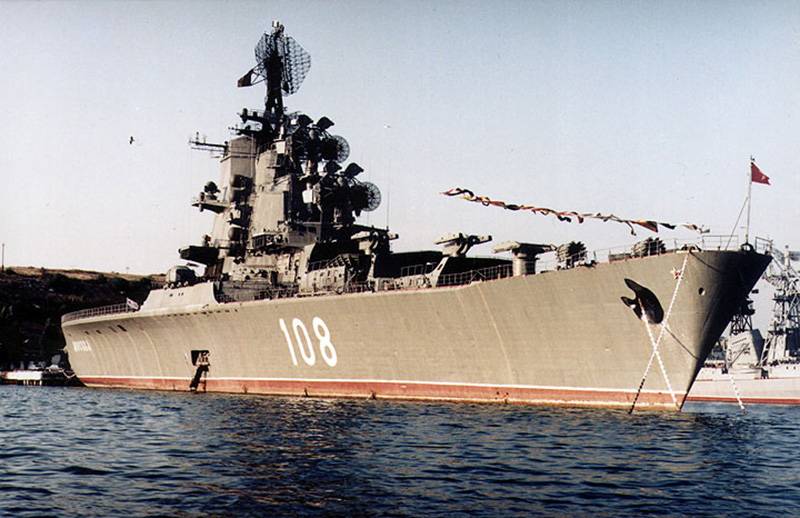
New plant name. Whalers and whalers
For a long time, whaling has been an effective and profitable occupation. In pre-revolutionary Russia, with the exception of some not entirely successful attempts, they were engaged in foreign companies, which were primarily interested in obtaining their own significant profits. In the early years of the Soviet regime, it was also not without foreign participation. In 1925, a concession agreement was signed with Norwegian entrepreneur K. Christensen, who received the right to beat whales in the Kamchatka region. Since Mr. Christensen, while actively operating his company, constantly and confidently hid the true scale of whale mining and the production of various raw materials from them, and consequently profits, then 1927 terminated the agreement with it.
It was decided to organize whaling by own forces. In 1930, the Glen Ridge bulk carrier was bought in the North American United States with a displacement of 10 thousand tons, and in Norway, one of the world leaders in catching whales, ordered four small whaling ships of special construction. Soon the first Soviet whaling base, dubbed the Aleut, traveled to the Far East. All the necessary work on the conversion of the former cargo ship was carried out in Leningrad, because the Norwegians, fearing competition, refused to carry out these works, reluctantly building not four but three whalers for the USSR.
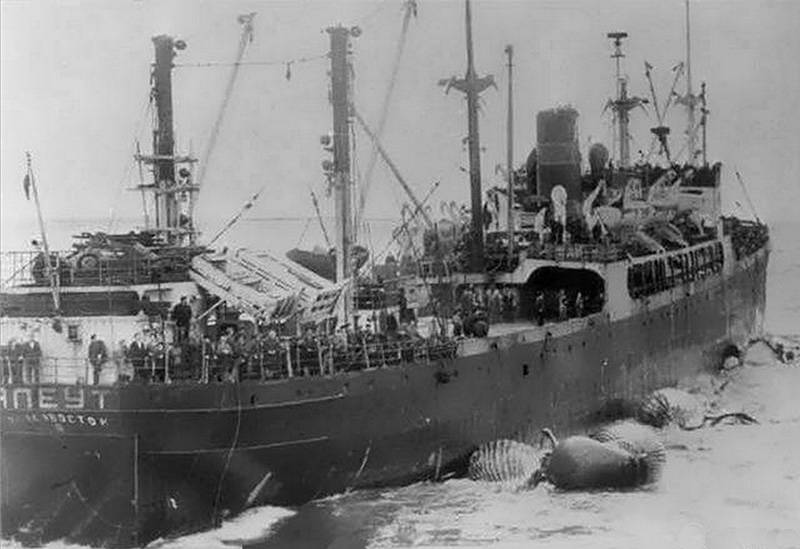
Soviet whaling flotillaCalled Aleut in honor of its flagship, it effectively hunted whales in the Far Eastern waters of the Soviet Union. The Great Patriotic War prevented further development plans for this industry. After its completion, the country's leadership began to attach great importance to whaling, seeing in it a partial solution to the acute food problem. In those conditions, whaling was necessary at a new qualitative and quantitative level.
The most productive region in this respect were the waters of the Antarctic. However, the Soviet Union in the middle of the 40's. He did not have special construction vessels for whale fishing in this region of the globe. Initially, the problem was solved by reparations. The Soviet side, among other German ships and vessels, was handed over to the Vikinger whale base along with a flotilla of 15 whalers. It was a large ship with a displacement of 38 thousand tons, built in England in 1929 by the Norwegian order. In 1938, it was acquired by Germany for its own needs. As part of the Soviet fleet, the Vikinger received a new name "Glory" and in 1946 for the first time in stories domestic fishing fleet went to the Antarctic expedition. In the first flights hired experienced Norwegian specialists took part, in the future they were replaced with already prepared domestic ones.
The whaling industry was highly efficient in the conditions of the restoration of the Soviet economy. Each successful “Glory” voyage in terms of food volume amounted to a slaughterhouse for meat of about 2 million sheep. Whale oil was used in various industries, other raw materials produced: amber and spermaceti - found application in perfumery and cosmetology. The demand for products derived from whales was very great, and it soon became clear that the power of the whaling fleets available through reparations was available (except for Glory for the Antarctic whale fishing, the former German liner Hamburg, which was named Yuri Dolgoruky "), were insufficient. It was decided to get the whale base from the shipbuilding industry of its own production.
The design of the 392 whale base was developed, the construction of which was to be carried out in Nikolaev. The plant named after Andre Marty in August 1956 was renamed into the shipyard named after I. I. Nosenko. In June, 1957, at the enterprise, in a solemn ceremony, was the laying of the first vessel, called “Soviet Ukraine”.
Kitobaza was the largest ship of this class in the world. Its total displacement was 45 thousand tons, and she was able to process 75 whale carcasses per day. The ship was equipped with a helipad and a search helicopter for the detection of whale herds. The number of crew and personnel of the processing plant, located on board, was about 600 people.
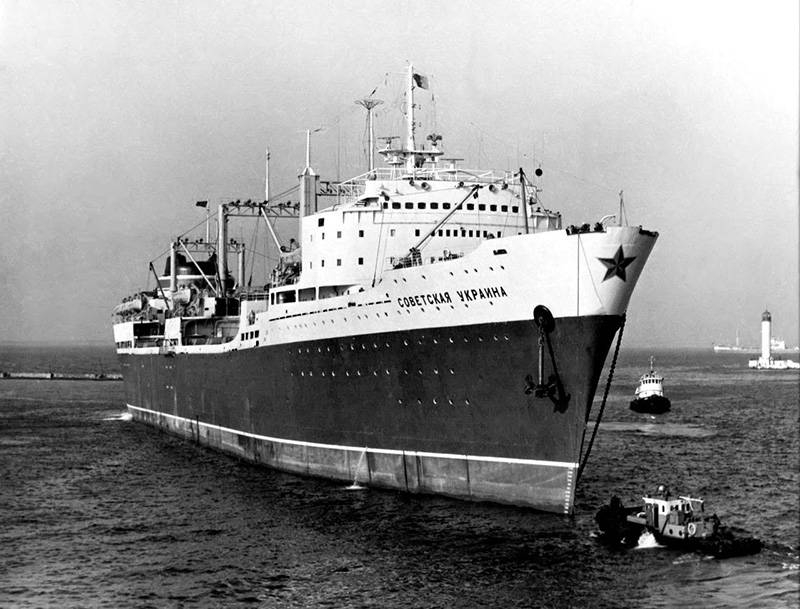
The construction of the “Soviet Ukraine” was proceeding at a fast pace — it was launched in January 1959 of the year. The completion afloat lasted for about 8 months, and in the same year the customer, represented by the USSR Ministry of Fisheries, accepted the vessel from the factory. At the end of September, 1959, after a test complex, arrived at the Odessa port to prepare for a campaign in Antarctica. A month later, in October, "Soviet Ukraine" went to the fishery.
The newest whalebase has proven itself to be used for its intended purpose, and in the liberated stocks in the same year, another ship under the 392 project, called “Soviet Russia”, was laid. In August, 1960 was launched into the water, and in 1961 she entered service. Unlike "Soviet Ukraine", "Soviet Russia" was assigned to the port of Vladivostok, although the place of fishing was also Antarctic waters.
The whale hunt took on an unprecedented scale. For direct mining of marine mammals, special whaling ships of the Mirny type 61 project in the number of 393 units were designed and built in stages at the Nikolaev plant named after 97 of the Communard. With a total displacement of 1200 tons of these ships, having as the main power plant four diesel engines for 900 l. with. each could develop a turn in 17 nodes. Twenty such whalers were assigned to "Soviet Russia" and "Soviet Ukraine", the rest were distributed among other whaling fleets.
At the beginning of the 1960's four whalers at the 61 plant of the Communard were converted into reconnaissance ships under the 363 project A. The increased whale catch brought the Ministry of Fisheries management into some excitement, and an order was given to design a third whale base of even greater displacement, which was supposed to be equipped with a nuclear power plant. Such a ship could be in the waters of the Antarctic almost unlimited time with the condition of shift crews, the supply of supplies and export of manufactured products by refrigerators and dry-cargo ships.
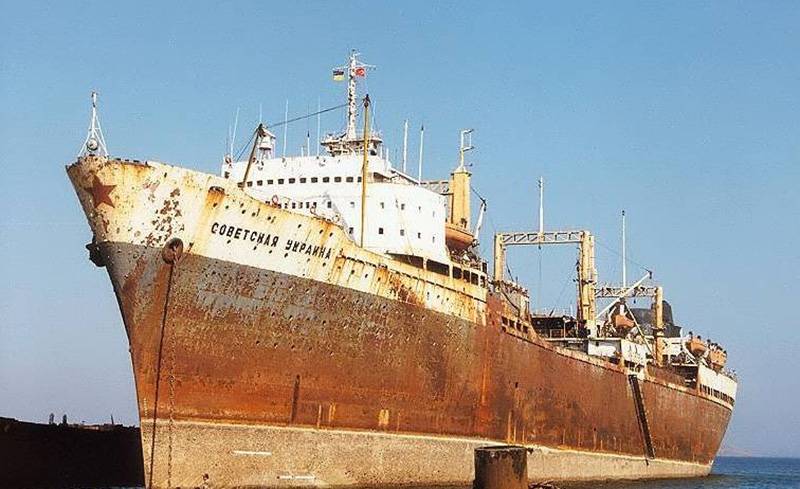
For a number of reasons, primarily of an economic nature, this ambitious project was abandoned. The large-scale extermination of whales led to a decrease in the volume of their fishery by the beginning of the 1970s. In 1980, “Soviet Russia” was converted into a fishing base, and “Soviet Ukraine” completed its whaling activity in 1987, when the USSR stopped the whale battle. Later it was converted into a fish cannery, in the middle of the 1990-s. sold for scrap to Turkey. Around the same period, they wrote off Soviet Russia.
Naval shipbuilding 60-x. Wings over deck
After the construction of submarines of the 613 project and light cruisers of the 68 bis project was completed, it was assumed that the Nosenko plant would build diesel submarines of the next project - 633, the further development of 613, developed by the Krasnoye Sormovo plant specialists. However, according to the government decree, it was decided to implement the construction of a new series of submarines in Gorky.
In the middle of 1950's. The Soviet leadership decided to organize a ferry crossing in the Kerch Strait. Originally it was planned to build a bridge for road and rail links with the Crimea. A similar structure was built by Soviet sappers in 1944 on the site of a German cable car supplying Army Group A in the Caucasus. Subsequently, the railway bridge was destroyed as a result of ice drift. For economic reasons, a large-scale project to build a new bridge was abandoned in favor of the ferry.
The plant was entrusted with the construction of three railway ferries of the 726 project with a displacement of 7500 tons, which could take on the deck a composition of sixty wagons. About 1000 tons of steel were processed, several sections were assembled when instructed to stop work.
Such throwings were caused by the redistribution of orders between the shipbuilding enterprises of the Soviet Union in the framework of Khrushchev's refusal of a number of projects in the defense sphere, including a reduction in fleet costs. Nikita Sergeevich was fascinated by the rocket technology and saw it as a guarantee of the country's security and confirmation of the status of a great power. The situation changed only at the beginning of 1960's, when the plant began construction of a completely new class of ships - anti-submarine cruisers.
The idea of having aircraft carriers in the Russian fleet has been in the naval circles since the middle of the 1930. In June 1938 of the year, by order of the country’s leadership, the Krylov Central Research Institute provided the RKKF Shipbuilding Directorate with tactical and technical requirements for aircraft carrier design with a 13 displacement thou. Tonnes capable of carrying an 30 bomber and 15 fighter aircraft group. In October 1938, the task was approved by the General Naval Staff.
A year later, in September 1939, the draft design of the first Soviet aircraft carrier was ready. The People's Commissariat of the Navy approvingly abandoned and sent the draft for revision. While the Krylov Research Institute was engaged in the improvement of its design, the Great Patriotic War began, and the USSR was not at all up to aircraft carriers.
1945 returned to this issue only in January, when there was no longer any doubt about the fate of Nazi Germany. A special commission was created, which was to determine the most necessary ships for advanced construction. For many responsible persons, it was clear that the allied relations within the framework of the anti-Hitler coalition would soon end, and the confrontation with the fleets of the Western powers would become obvious in the coming years. Having studied the experience of war at sea, the commission expressed the view that aircraft carriers are necessary for all the fleets of the USSR. Squadrons - for the Pacific and North and small - for the Baltic and Black Sea.
It seemed that the creation of aircraft carriers was finally given the green light. However, in the construction of military ships, adopted in November 1945, this class of ships was not. There were many reasons for this: both the shipbuilding industry that was fundamentally affected by the war and the resistance to the appearance of this type of ships in the domestic fleet of the part of the Soviet leadership, who considered it to be too luxurious. Thus, they began to build heavy cruisers of the “Stalingrad” type, the need for which caused great doubts, but there was no place for aircraft carriers.
The aircraft carriers appeared in the Soviet Navy only at the beginning of the 1960s. In the second half of 50, the Soviet leadership received information that the United States is in full swing working on the construction of George Washington-type nuclear submarines capable of carrying Polaris A-16 medium-range ballistic missiles on board 1. The range of this missile was 2200 km, which allowed nuclear strikes on objects in the Soviet Union from the North Atlantic and the Mediterranean.
One of the measures to actively counter such a serious threat was the creation of ships capable of carrying anti-submarine helicopters on board. At the end of 1958, a resolution on the scientific and technical development of such ships was approved by a resolution of the CPSU Central Committee and the USSR Council of Ministers. As a result, the Nevsky Design Bureau created a project for the helicopter carrier of the 1123 project, which received the Condor code. In January 1962, the project was approved by the command of the Navy.
By this time, American nuclear submarines of the George Washington type had already been commissioned, and the construction of more sophisticated nuclear submarines of the Eten Allen type was in full swing. The construction of new cruisers was entrusted to the Nosenko Nikolaev Shipbuilding Plant. The first cruiser, dubbed "Moscow", was laid on the stocks No. XXUMX 0 of December 15. Its full displacement should have been 1962 thousand tons. The main weapons, in addition to anti-aircraft missile, torpedo and artillery, were X-NUMX Ka-17,5 helicopters in the anti-submarine version. In January, 14 “Moscow” was launched, and in December, 25 was launched.
The second ship on the 1123 project was laid on the liberated stocks in January, 1965. It was called Leningrad. He was launched in July 1967, and in June, the 1969-th cruiser entered service.
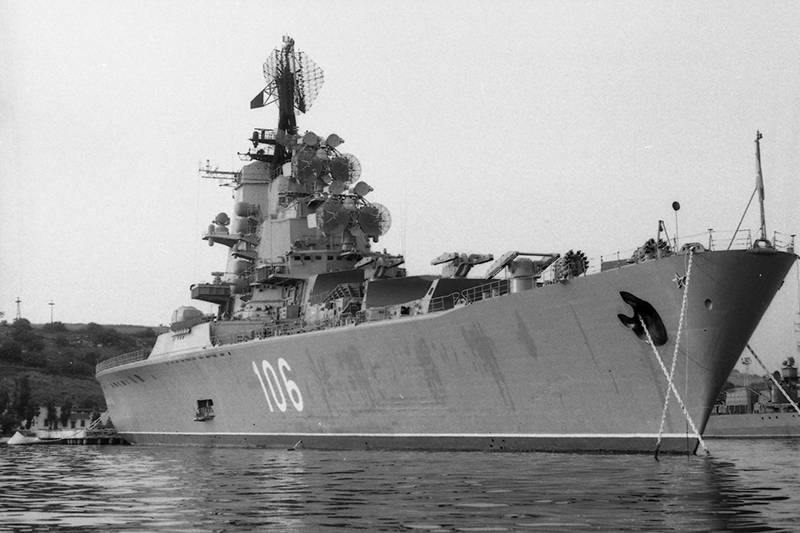
Both ships, which before 1965 were officially classified as "anti-submarine defense ships of the far zone", became part of the Black Sea Fleet. Their service was intense and intense: constant patrols in the zone of likely presence of American submarines, participation in numerous exercises, regular visits to ports and bases of the allied states and friendly to the USSR.
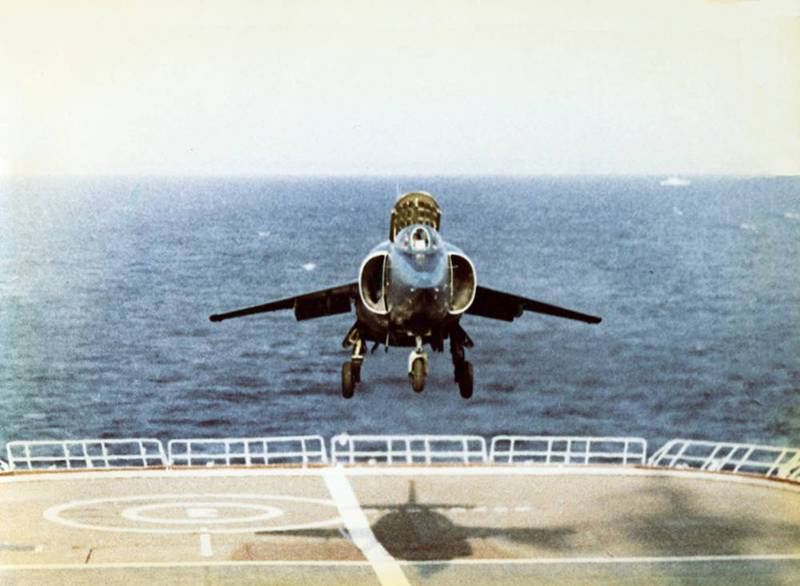
In addition, it fell to Moscow to play the role of a test bench for the promising aviation technicians. On November 12 of this year, for the first time in the history of the Soviet fleet, a Yak-36 M. vertical takeoff / landing aircraft landed on its deck
The collapse of the Soviet Union adversely affected the entire Russian fleet, including the Moscow and the Leningrad anti-submarine cruisers, whose combat career had come to an end. In 1995, the last expedition to dismantle the coast of India made "Leningrad". And in the year 1997 the same way was destined to go a little longer held out "Moscow". Total for the project 1123 "Condor" planned to build three ships. The third cruiser, which was supposed to be called "Kiev", was, according to the project, on 12 meters longer than the first two. However, it was abandoned, and the anti-submarine cruiser of a new, completely different project, which was also built at the Nikolaev Nosenko Shipyard, was named after him.
Information